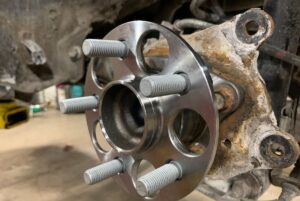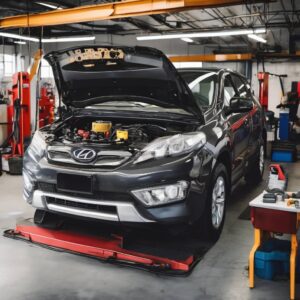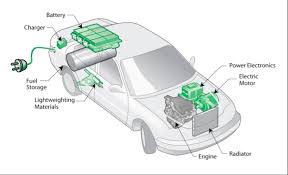Warning for Vehicle Wear and Tear Amid High Summer Temperatures
As temperatures soar during the summer months, so does the risk of vehicle wear and tear. While warm weather might feel like a blessing after winter, the intense heat can quietly wreak havoc on your car’s most critical systems. Failing to account for the effects of high summer temperatures can lead to breakdowns, costly repairs, and even dangerous driving conditions.
In this in-depth guide, we’ll explore:
- How extreme heat affects different parts of your vehicle
- Warning signs of summer-related wear and tear
- Essential maintenance tips to protect your car
- How to stay safe on the road when the mercury rises
How Summer Heat Affects Your Vehicle
High temperatures put added stress on almost every component of your car. Here are the most commonly affected systems:
1. Battery Failure
Heat is harder on batteries than cold. Summer temperatures accelerate chemical reactions inside the battery, leading to:
- Shortened battery life
- Corrosion of terminals
- Evaporation of battery fluid
Warning Signs:
- Slow engine crank
- Dim interior lights or flickering dashboard
- Rotten egg smell (sulfuric acid leak)
- Dashboard battery warning light
Tip: Get your battery tested before peak summer hits—especially if it’s more than 3 years old.
2. Engine Overheating
Your engine generates a lot of heat on its own. When combined with extreme summer temperatures, your cooling system works overtime to keep things in check.
Common Summer-Related Issues:
- Coolant evaporation or leaks
- Faulty radiator fans
- Clogged or failing thermostats
- Low coolant levels
Warning Signs:
- Temperature gauge rising
- Steam from under the hood
- Sweet, syrupy coolant smell
- Dashboard temperature warning light
Tip: Regularly check coolant levels and radiator hoses. Make sure your coolant mixture (typically 50/50 water and antifreeze) is correct.
3. Tire Blowouts
Hot pavement and under-inflated tires are a dangerous combination. As the air inside your tires expands in the heat, tires are more prone to wear, cracking, and blowouts—especially if they’re old or poorly maintained.
Warning Signs:
- Cracks in the sidewall
- Low or uneven tread wear
- Low tire pressure warning light
- Vibration while driving
Tip: Check tire pressure regularly (including the spare), and inspect tires for wear. Don’t overinflate to compensate for under-inflation—follow manufacturer specs.
4. Transmission Stress
Transmission fluid helps cool and lubricate the complex gears in your transmission. High temperatures can thin or degrade this fluid, leading to slipping gears and poor performance.
Warning Signs:
- Hesitation or jerking during gear shifts
- Burning smell from under the hood
- Transmission warning light
Tip: Keep your transmission fluid clean and topped off. If you tow, drive in stop-and-go traffic, or climb hills frequently, consider a transmission cooler.
5. A/C System Strain
You rely on your air conditioning system to keep cool, but it also bears extra load during extreme heat. A failing A/C doesn’t just make you uncomfortable—it can signal deeper issues.
Warning Signs:
- Warm or weak airflow
- A/C cycles on and off rapidly
- Clicking or whining noise from the compressor
- Musty or moldy smell from vents
Tip: Have your A/C system inspected annually, and recharge the refrigerant as needed. Replace cabin air filters to maintain air quality and efficiency.
6. Fluid Degradation
Summer heat causes various fluids to evaporate or break down faster, including:
- Engine oil
- Brake fluid
- Power steering fluid
- Transmission fluid
- Windshield washer fluid
Warning Signs:
- Low fluid levels
- Leaks under the car
- Unusual smells or performance issues
Tip: Check all fluids monthly during hot weather, and follow your owner’s manual for recommended change intervals.
7. Worn Belts and Hoses
Rubber components like serpentine belts, radiator hoses, and vacuum lines degrade faster in extreme heat. Cracked or swollen hoses can lead to leaks or total system failure.
Warning Signs:
- Squealing noise from belts
- Visible cracks, bulges, or frays
- Coolant leaks or drops in pressure
Tip: Inspect belts and hoses every oil change. Replace anything that looks worn or brittle.
8. Paint and Interior Damage
Direct sun and heat can fade your car’s paint, dashboard, and upholstery. It’s more than cosmetic—sun damage can crack plastic trim and warp interior materials.
Warning Signs:
- Faded paint or clear coat peeling
- Cracked dashboard
- Bleached or stiffened leather seats
Tip: Park in shaded areas or use a sunshade. Wash and wax regularly to protect your paint, and use interior protectants for dashboards and leather.
Summer Car Maintenance Checklist
To minimize summer-related wear and tear, follow this simple seasonal maintenance checklist:
✅ Check tire pressure weekly
✅ Inspect coolant and oil levels
✅ Have your battery tested
✅ Inspect belts and hoses
✅ Flush or top off transmission fluid
✅ Service your A/C system
✅ Use sunshades and seat covers to protect the interior
✅ Wash and wax your car regularly
Emergency Items to Keep in Your Car During Summer
Hot weather breakdowns are more common than you think. Always be prepared with:
- Extra water for passengers and the radiator
- Portable jump starter or jumper cables
- Tire repair kit or spare tire
- Coolant or antifreeze
- Emergency triangle or flares
- Phone charger or power bank
- Sun protection (hat, sunscreen, umbrella)
Conclusion
High summer temperatures can silently accelerate vehicle wear and tear, leading to unexpected breakdowns and costly repairs. By understanding the risks and recognizing early warning signs, you can take proactive steps to keep your car running smoothly all summer long.
From your engine and transmission to your tires and battery, extreme heat touches every part of your vehicle. Stay cool, stay safe, and don’t wait until your car leaves you stranded—get your summer vehicle inspection done today.






